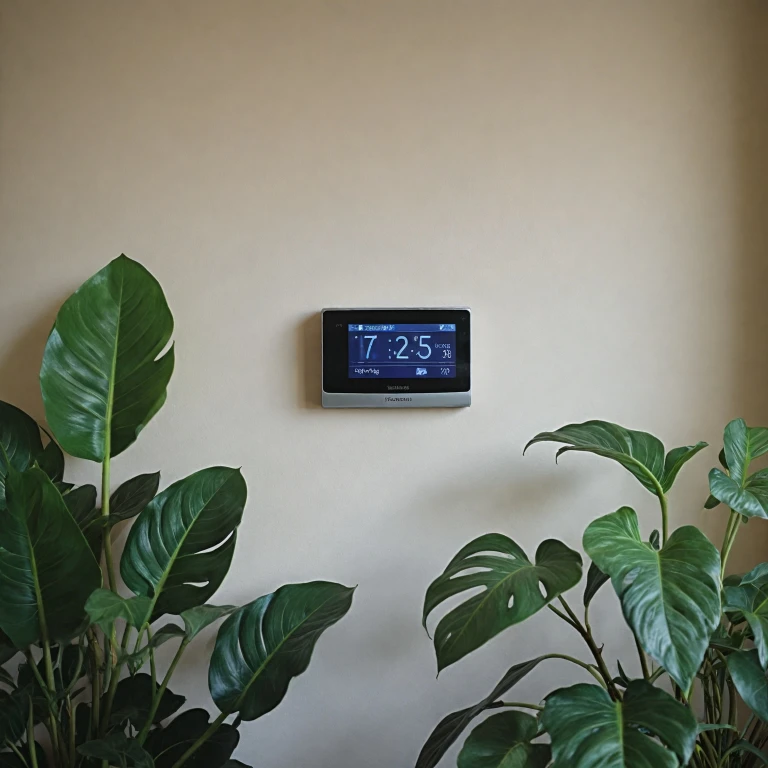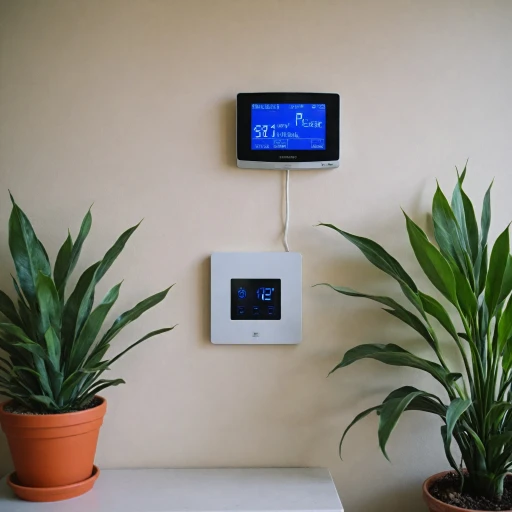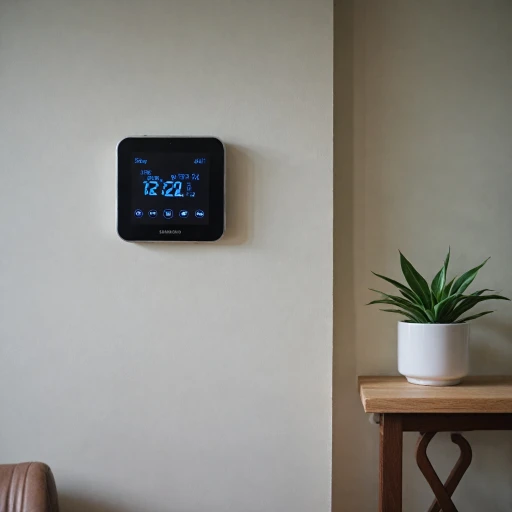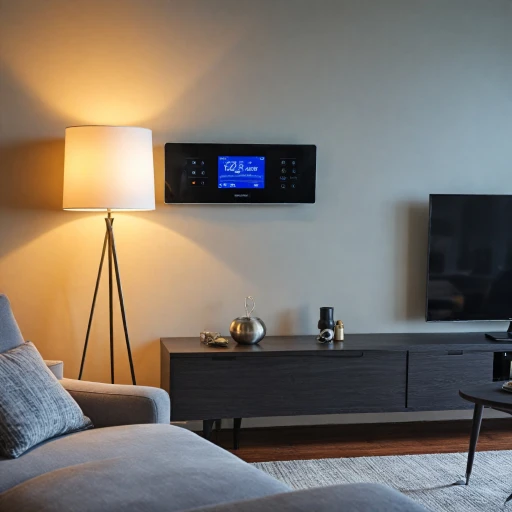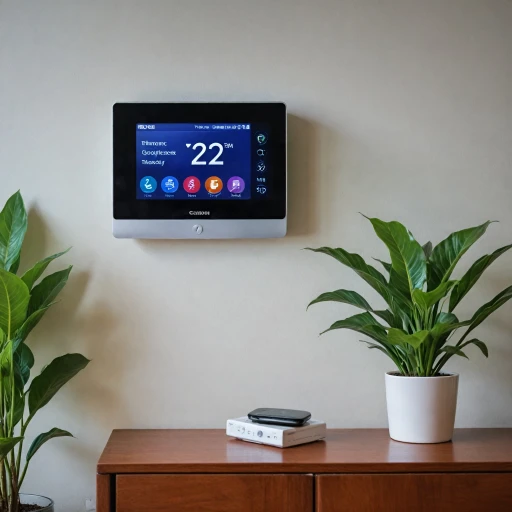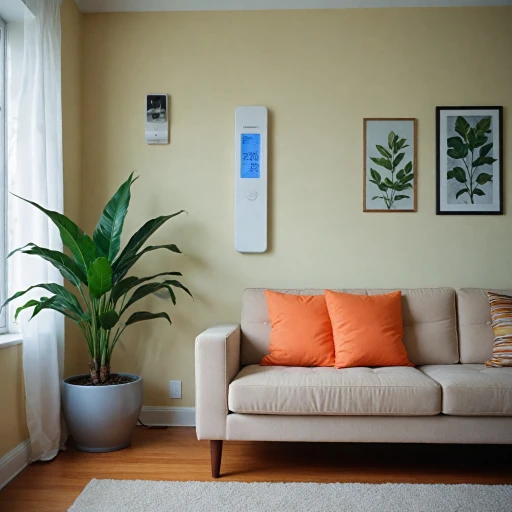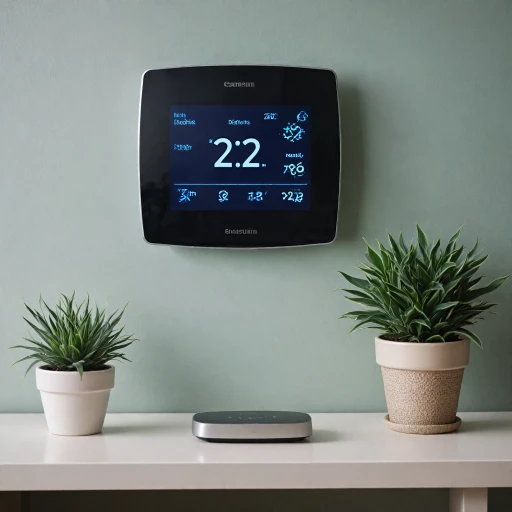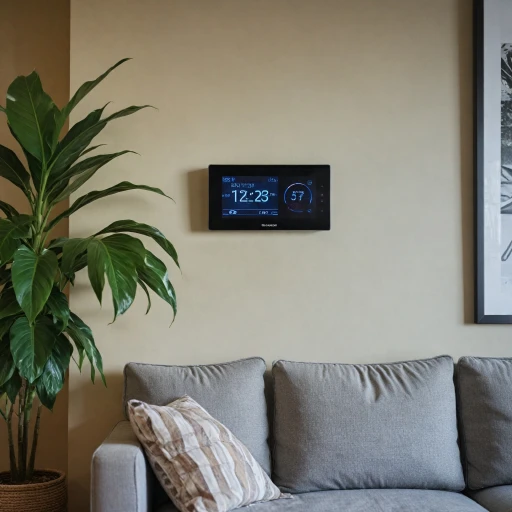
Understanding Battery-Powered WiFi Thermostats
How a Wireless Thermostat Functions
Battery-powered WiFi thermostats stand out in the smart home ecosystem with their unique ability to function wirelessly. This design choice negates the need for complex wiring installations that can often deter potential users. Understanding how a wireless thermostat works can offer a clearer picture of its benefits in a modern home setup. Battery-powered models like the Ecobee and Google Nest use wireless communication protocols that connect the thermostat to your home network. Once linked, these devices can be controlled remotely through smart assistants like Alexa and Google Assistant or through dedicated apps on smartphones. As a result, you gain the ability to adjust the temperature settings in your home from virtually anywhere, enhancing both convenience and energy efficiency. In many cases, these thermostats come with built-in sensors that monitor the temperature and adjust the heating or cooling systems accordingly. The inclusion of these sensors means improved accuracy in maintaining comfortable temperature levels, which can ultimately lead to energy savings. Furthermore, as a key component in smart home technology, these thermostats work seamlessly with other smart devices, creating an interconnected environment that can learn from your habits. Battery-powered thermostats typically offer easy installation and simple maintenance, as they do not require physical connections to power sources via wires. This design not only simplifies the set-up process but also offers greater flexibility in placement within the home. Some models, including Amazon smart thermostats, offer programmable options that can be customized to fit your lifestyle, providing enhanced comfort while potentially reducing energy costs.Advantages of Battery-Powered Models
The Diverse Benefits of Battery-Powered WiFi Thermostats
When diving into the realm of smart home technology, battery-powered WiFi thermostats stand out due to their unique advantages that make them a strong contender in the modern household. These devices, like the ecobee smart and Google Nest, are not only popular for their sleek design and functionality but also for the conveniences they offer to homeowners.Flexibility of Installation
One of the standout features of battery-powered models is the flexibility they offer in installation. Unlike traditional thermostats that require a complex network of wires, these smart devices can work in homes where a wire required setup is not feasible. This eliminates the expense and hassle of additional electrical work, making it particularly appealing for older homes.
Enhanced Smart Features
These thermostats come equipped with advanced smart features such as programmable schedules and remote control access. Whether you prefer using Amazon Alexa, Google Assistant, or any other platform, the integration with voice assistants like Alexa Google and Amazon Echo allows users to adjust temperature settings with simple voice commands, ensuring a hands-free experience.
Cost-Effective Solutions
While the initial price may vary depending on the brand and model, the long-term energy savings from these thermostats can lead to significant reductions in utility bills. Many models are Energy Star certified, ensuring efficient heating and cooling throughout the year. This energy efficiency not only benefits your wallet but also reduces your carbon footprint.
Advanced Sensor Technology
The inclusion of temperature and occupancy sensors allows for a more intuitive approach to climate control. These sensors help the thermostat work smarter by adjusting heating and cooling based on habitation patterns, ensuring optimal comfort while avoiding unnecessary energy consumption. Products like the Nest Learning thermostat and similar devices continuously learn and adapt over time.
Check out the comprehensive analysis of Honeywell 9000 WiFi thermostat features, a modern choice that perfectly blends smart technology with practical home application.
Considerations for Choosing the Right Model
Factors to Consider When Selecting a Battery-Powered WiFi Thermostat
Choosing the right battery-powered WiFi thermostat involves evaluating several factors to ensure it meets your specific needs. Here’s a breakdown of key considerations:
- Compatibility with Existing Systems: Ensure the thermostat works with your current heating and cooling systems. Some models, like the Nest Learning thermostat, are compatible with a wide range of systems, including heat pumps.
- Integration with Smart Home Devices: Consider whether the thermostat is compatible with smart home platforms like Alexa, Google Assistant, and Amazon Echo. This integration allows for voice control and seamless operation within your smart home ecosystem.
- Power Source and Battery Life: Since these thermostats are battery-powered, check the battery life and whether a wire is required for installation. Some models offer long-lasting power without frequent battery changes.
- Energy Efficiency and Certifications: Look for Energy Star certified models that offer energy savings. A programmable thermostat can help optimize your energy use, reducing costs over time.
- Price and Budget: Evaluate the price range of different products. While some thermostats offer advanced features at a higher cost, others provide essential functionalities at a more affordable price.
- Sensor and Learning Capabilities: Consider models with built-in sensors and learning capabilities, like the Ecobee Smart or Google Nest, which adjust temperature settings based on your habits and preferences.
By weighing these factors, you can select a thermostat that not only meets your immediate needs but also integrates smoothly with your future smart home plans. For more insights on how these devices can enhance your home environment, explore our comprehensive guide.
Energy Efficiency and Cost Savings
Maximizing Your Energy Savings
A battery-powered WiFi thermostat is a forward-thinking investment that offers significant energy savings over time. By taking advantage of advanced features such as programmable settings, these smart thermostats enable you to control the heating and cooling in your home with greater precision. This adaptability reduces the amount of energy wasted and directly impacts your monthly bills.
Many models, like the Ecobee Smart and Google Nest, come equipped with an array of sensors that optimize the air conditioning and heat pump systems based on your daily schedule. This learning capability, often referred to as a learning thermostat, allows the device to adjust temperatures automatically, reducing energy consumption when you're away.
Moreover, smart thermostats connect seamlessly with other devices. An Alexa-enabled or Google Assistant-compatible thermostat allows for easy voice control, enhancing convenience while nurturing energy efficiency. For those already equipped with an Amazon Echo or similar smart hub, integrating your thermostat is straightforward, enhancing both usability and potential savings.
Returning to the economic aspect, the price of upgrading to a smart, battery-powered model is often offset by the savings gained through optimized energy usage. Many products are Energy Star certified, promising reliable energy efficiency. The star certification ensures that any thermostat you choose has been rigorously tested to save energy without sacrificing performance.
Ultimately, the choice of thermostat should be driven by its ability to align with your energy-saving goals. Devices like the Nest Learning and Ecobee Smart offer options that maximize efficiency while providing flexibility in control and compatibility with numerous smart home devices.
Installation and Maintenance Tips
Setting Up Your Smart Thermostat
Installing a smart thermostat, like the Ecobee Smart or Google Nest, is generally straightforward, but there are a few key steps to ensure it works efficiently. Firstly, ensure the power is off before you start, as this is crucial for safety. Most smart thermostats, whether Alexa-enabled or Google Assistant-compatible, will come with a detailed installation guide. Follow these instructions carefully, particularly if a wire is required for your specific model.
Connecting to Your Smart Home Ecosystem
Once installed, integrating your thermostat with other smart devices, such as Amazon Echo or Google Home, can enhance its functionality. This integration allows you to control the temperature using voice commands. For instance, you can say, "Alexa, set the thermostat to 72 degrees," and your thermostat will adjust accordingly. This feature is especially useful for programmable thermostats and learning thermostats, which adapt to your heating and cooling preferences over time.
Maintenance for Optimal Performance
Regular maintenance is essential to keep your smart thermostat running smoothly. Check the battery status periodically if you have a battery-powered model. Ensure that the sensors are clean and unobstructed, as these play a crucial role in temperature regulation. Some models, like the Nest Learning Thermostat, offer notifications when maintenance is needed, which can help in maintaining an energy-efficient home.
Maximizing Energy Efficiency
To maximize energy efficiency and cost savings, consider the thermostat's placement. Avoid installing it near heat sources or direct sunlight, as this can affect its temperature readings. Many smart thermostats, such as those that are ENERGY STAR certified, offer features that help optimize energy use, reducing your overall energy consumption and potentially lowering your bills.
Cost Considerations
While the initial price of smart thermostats can vary, investing in a quality product can offer significant long-term savings. Devices like the Ecobee and Google Nest often provide features that justify their cost, such as remote access, energy reports, and compatibility with various smart home platforms. These features not only enhance convenience but also contribute to more efficient energy use.
Future Trends in Smart Thermostat Technology
The Evolution and Future of Smart Thermostat Technology
As the home automation industry grows, smart thermostat technology is continually advancing. These devices offer far more than simple temperature control. With innovations in sensor technology, integration with platforms like Amazon Alexa and Google Assistant, and enhanced learning capabilities, the future of smart thermostats is undoubtedly exciting.
Today's models, such as the ecobee smart and Google Nest, have already set the bar high. By leveraging artificial intelligence, these devices are designed to learn your schedule over time, leading to optimized energy efficiency and potential cost savings. As you might expect, the emergence of energy star certified models continues to raise the standards for both efficiency and comfort.
Looking ahead, we can anticipate further enhancements in connectivity and functionality:
- Integration with Other Smart Home Devices: Future models are expected to integrate more seamlessly with a wider ecosystem of smart home products.
- Enhanced AI and Machine Learning: The next leap involves thermostats that could predict events and automate settings without user input.
- More Intuitive User Interfaces: Expect easier use, perhaps through voice commands or mobile apps that work across platforms like Alexa and Google.
- Advanced Energy Management Tools: Sophisticated systems will allow users to track and manage energy consumption with greater precision.
- Increased Customization: Offering personalized settings, smart thermostats may cater even more to individual preferences, improving both function and aesthetics.
With these advancements, the way a thermostat works in our homes will shift dramatically, catering to an increasingly tech-savvy audience. As more homeowners invest in systems like the Nest Learning and Ecobee Smart, the market will require continuous updates and enhancements to meet evolving needs.
